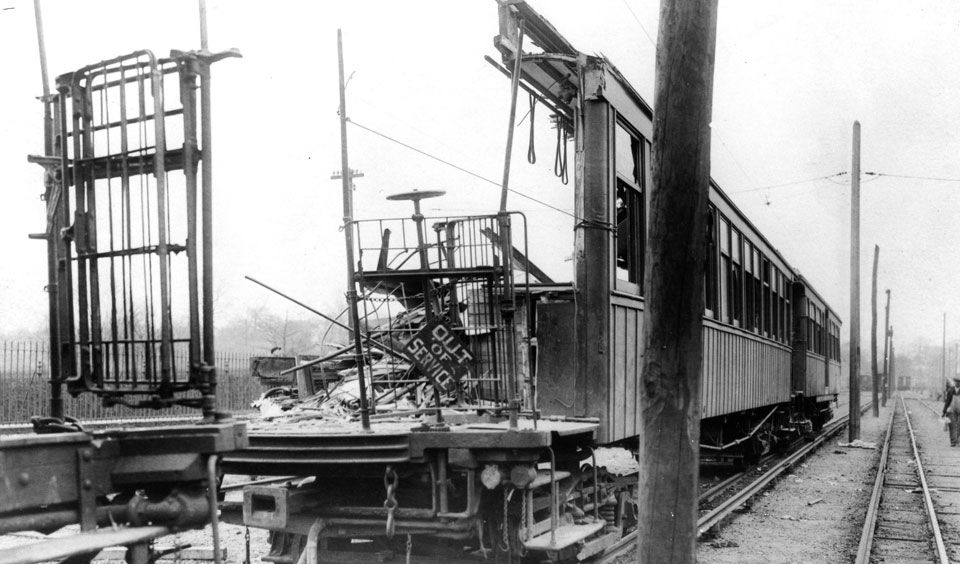
One hundred years ago, on November 1, 1918, the worst subway accident in the history of New York City took place: the Malbone Street Wreck. It was caused by a scab train operator during a strike.
At least 93 people died, and many others hurt, making it one of the deadliest train crashes in U.S. history.
There had been strife between the Brooklyn Rapid Transit Company (BRT) and the union known as the Brotherhood of Locomotive Engineers. When negotiations failed, over issues involving union organization and the discharge from employment of a number of union members, the Brotherhood called on motormen and motor switchmen to strike on November 1. This created a shortage of motormen to operate the system.
During the 1910s, the BRT was under contract with the City of New York to construct new subway lines and upgrade older lines in partnership with the Interborough Rapid Transit Company (IRT)–a time in transit history known as the “Dual Contracts Era.”
In September of 1918, a newly constructed tunnel under Malbone Street in Flatbush opened to accommodate the growth of the subway system. The new tunnel, heading toward the Prospect Park station, would allow trains to pass over a new connection for the subway, and was constructed with a sharp S-curve. Train operators were instructed to travel at a maximum of 6 mph to ensure safety.
To prevent disruption in service during the strike, the BRT placed inexperienced workers in operating roles, including 23-year-old crew dispatcher Edward Luciano, who was pressed into service as a motorman on a Brighton Beach-bound train. He had never previously operated a passenger train. The wooden five-car train was crowded with 650 passengers, rushing south at an accelerated speed on the tracks of today’s Franklin Ave. Shuttle. At 6:42 pm, the train approached the S-curve in the tracks at approximately 30 mph, 24 mph over the speed limit, and derailed. The crash could be heard a mile away.
In addition to the scab motorman’s inexperience and the excessive speed of the train, the train cars themselves were not configured properly. Trains of that era featured two types of cars: a motor and a trailer. Motor cars were about twice as heavy as trailer cars and their weight was distributed evenly. Trailer cars were lighter with most of their weight on top, especially when loaded with passengers. Normally, trains alternated motor and trailer cars to provide stability. But Luciano’s train was configured incorrectly, probably because another inexperienced scab switchman coupled the train in the yard before its run. The instability contributed to the derailment when Luciano sped into the curve.
After the first car derailed, careening into a concrete wall, the two following cars completely left the tracks, their left-hand sides and most of their roofs tearing off. The first and fourth cars sustained relatively minor damage, while the second and third, both trailer cars, were severely damaged. The fifth suffered no damage at all. The motorman, not injured, ran home hysterically.
Edward Luciano and five high-ranking members of the BRT Co. were brought to trial as a result of the Malbone Street accident. Investigation discovered that in the minutes leading up to the wreck, Luciano did not slow down and he overshot several stations. He was also suffering from insomnia after losing a child to the Spanish influenza epidemic and was working a double shift. Unfamiliar with this route, he was eager to make up time because of an earlier switching problem which had forced him to reverse the train and proceed again on the correct track.
Luciano’s driving frightened many of the passengers that fateful night; some had chosen to exit the train at earlier stops. Some 400 were still aboard at 6:42.
All six defendants were eventually acquitted of the charges or had the indictments dropped. There were, however, two considerable awards of damages against BRT in the courts: Ethel Holmes, widow of George W. Holmes, was awarded $40,000, and Ethel Pierce was awarded $30,000.
The Malbone Street wreck led to new safety measures, such as stricter training and requirements for motormen, phasing out of wooden train cars and replacing them with composite wood and steel cars and ultimately fully metal-bodied cars, improving signal systems, and installing onboard train controls to guard against excessive speed.
The BRT went into bankruptcy just a few weeks later, but then revived as the BMT, or Brooklyn-Manhattan Transit Corp.
Malbone Street is known today as Empire Boulevard. A detached one-block section of the street in Crown Heights, Brooklyn, still bears the original Malbone Street name, but no plaques or markers exist to record the tragedy. The accident preoccupied New York newspapers for several days, pushing news of World War I off the front pages, but slowly faded from public memory. Just ten days later, on Nov. 11, 1918, the armistice ending the war was declared, and attention soon moved on to other events.
A creative video incorporating archival photographs, that does not, however, bring out the labor issue, can be viewed here.
Sources: New York Transit Museum, Wikipedia and Hannah Frishberg, whose New York Post article on the wreck can be read here.

MOST POPULAR TODAY

Hold the communism, please: SFMOMA’s Diego Rivera exhibit downplays artist’s radical politics

“Trail of Tears Walk” commemorates Native Americans’ forced removal

After months of denial, U.S. admits to running Ukraine biolabs

‘Warning! This product supports genocide’: Michigan group aims to educate consumers

Ohio: Franklin County treasurer attends Netanyahu meeting, steps up Israel Bond purchases






Comments